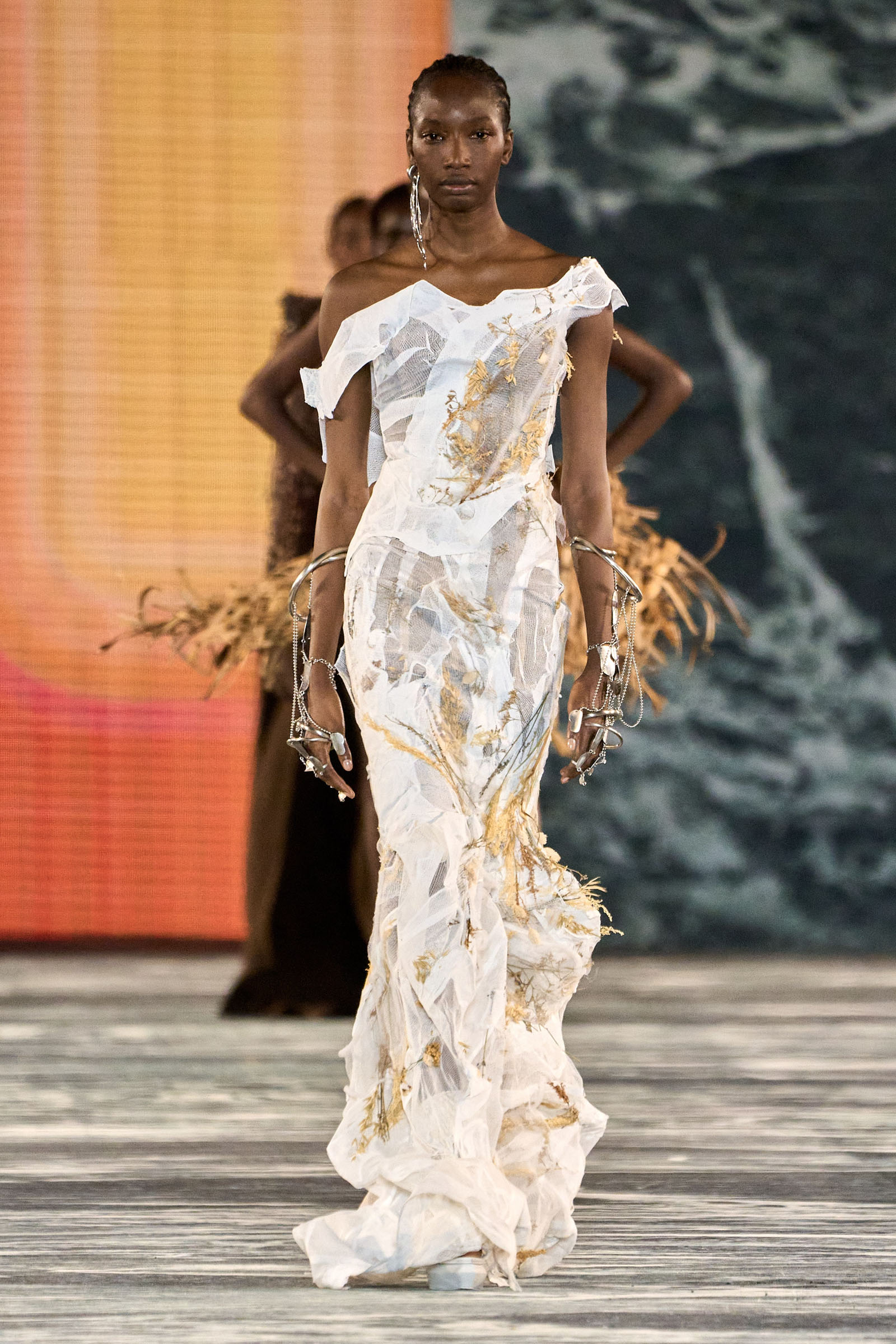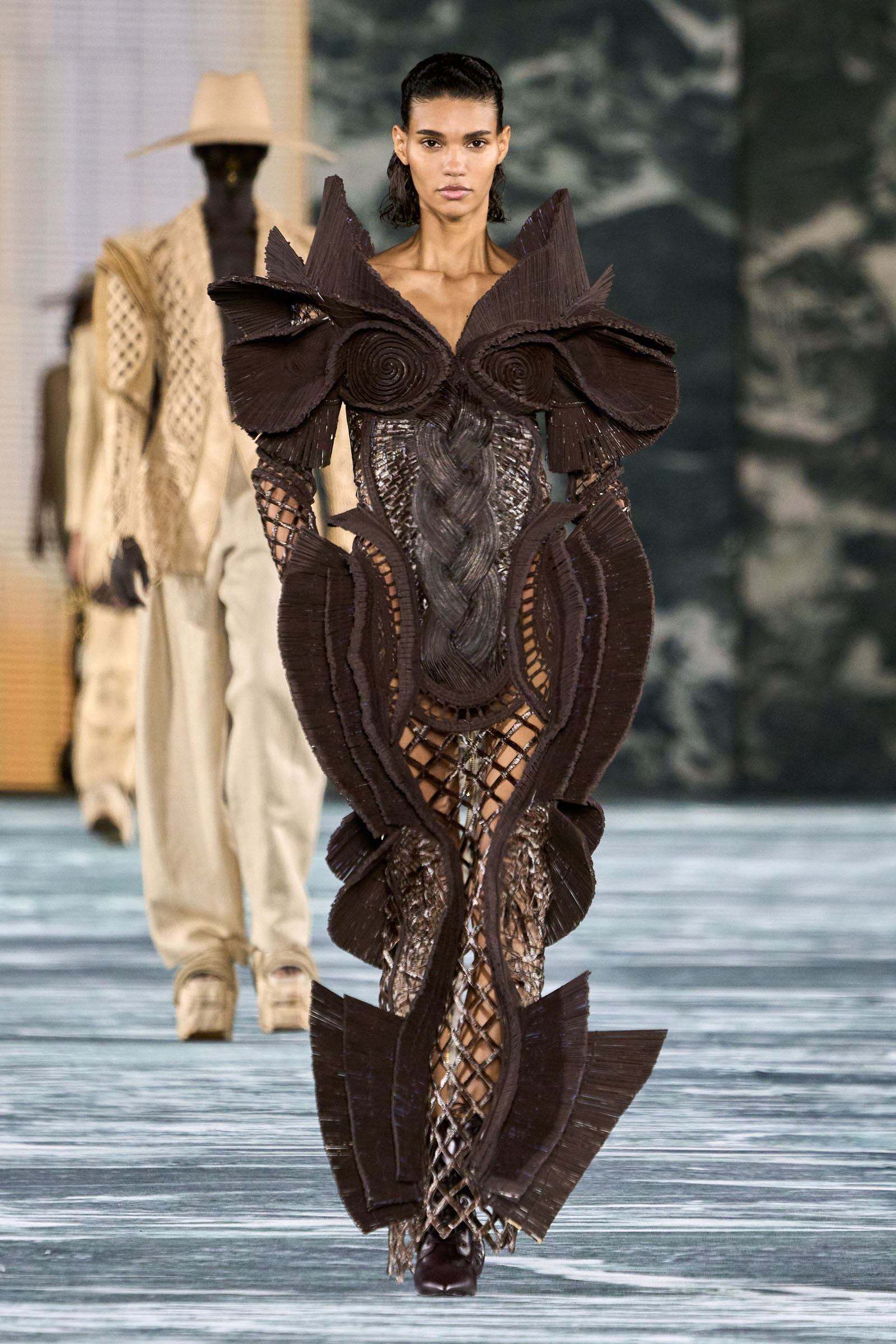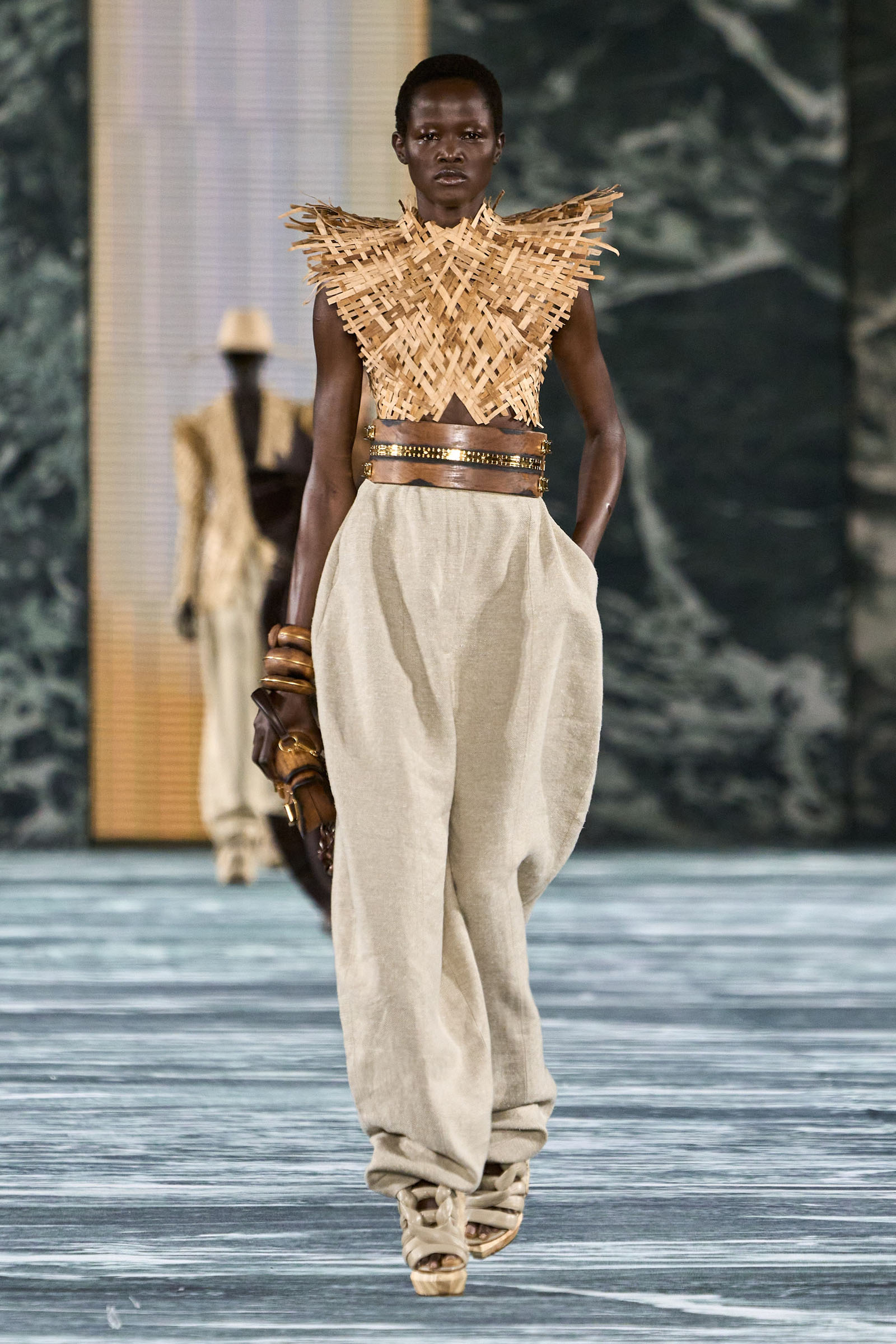LOOKING BACK ON OLIVIER ROUSTEING’S DAZZLING DECADE OF CHANGING COUTURE
BY RHIANNA JONES

Fashion is a revolution, not an evolution,” said Olivier Rousteing, the designer who has thoughtfully revolutionized Balmain since being tapped as creative director at the ripe age of 25. The first Black creator to helm a French couture house (and the youngest since Yves Saint Laurent), Rousteing was an unexpected choice to lead the atelier’s future, but he has used this hallowed position to diversify and democratize the industry since day one.
A chance internship at Roberto Cavalli led to a five-year stint with the Italian house before Rousteing joined Balmain to head women’s Prêt-à-Porter. Once his predecessor Christophe Décarnin stepped down Rousteing was knighted to take the throne in 2011. With grace and gratitude, his debut collection paid tribute to Pierre Balmain’s opulent femininity and utilitarian chic, while also nodding to the “baroque’n’roll” audience his predecessor Christophe Decarnin so masterfully seduced. Rousteing honored the house’s traditional techniques while offering his own Midas touch. With a visibly youthful, diverse, and millennial appeal, Rousteing’s Balmain is a rebellious one, reinventing the runways for a new wave of devotees.

“Fashion is a battle eld in which you have to fight to impose your ideas,” he famously said. With this call to action, Rousteing opened doors to a new glamour for his generation, attracting a legion of followers, called the #BalmainArmy. The ornate military aesthetic featuring crystal studded dresses and sexy suiting made him an early pioneer of the high-end streetwear aesthetic. His army spans celebrities, artists, and consumers alike, and he often fuses music, dance, photography, and fashion in his campaigns. From dressing Beyoncé and Justin Bieber to reviving icons Naomi, Cindy, and Claudia for a spring campaign, Balmain is constantly at the forefront of pop culture moments.
But beyond stunt appeal, Rousteing’s new-age and strategic business approach brought monumental success to the brand. While the Metaverse may dominate the fashion industry today, Rousteing was an early adopter, opening a VR concept boutique for SS13 with Milan-based Wonderlabs. He launched Balmain’s menswear line in 2016, with a collection inspired by the 20th century’s greatest explorers, inviting a world of male consumers seeking something adventurous yet elegant to the brand. The 2019 relaunch of Balmain accessories – complete with gilded watches, leather goods, and even blinged-out headphones – expanded the brand audience beyond boundaries of size and silhouette. The explosively successful collaboration with H&M made Balmain a household name, and affordable for all worldwide. By removing the historic gatekeeping spirit of couture and utilizing social media as the primary source of consumer connection, he built a future-forward communication approach.

Like other pioneering young designers, from Virgil Abloh to Simone Porte Jacquemus, Rousteing’s anomalous background mirrored his commitment to change the “extremely elitist milieu” of couture. The designer’s origins were the topic of the acclaimed Netflix documentary Wonderboy, where he opened up about being a Somali-Ethiopian orphan abandoned at one and adopted by a White Catholic family in Bordeaux. The social hardships he experienced and overcame shaped his guiding principle as a designer: “By celebrating where we come from, we can clearly see where we’re going.” His latest foray, the Balmain Festival, a music and food-filled fashion festival, presents haute couture gone wild. While Fashion Week is notoriously closed to everyone but editors, influencers, and socialites, here 10,000 Balmain Army members get to attend Paris Fashion Week. Tickets are free, with suggested donations benefiting (RED) and the Global Fund. Rousteing continues not only to push the boundaries of couture, but to rethink an entire culture of fashion for the next generation.
